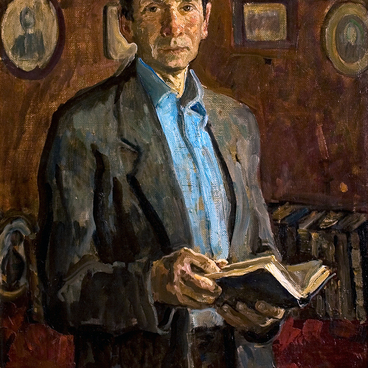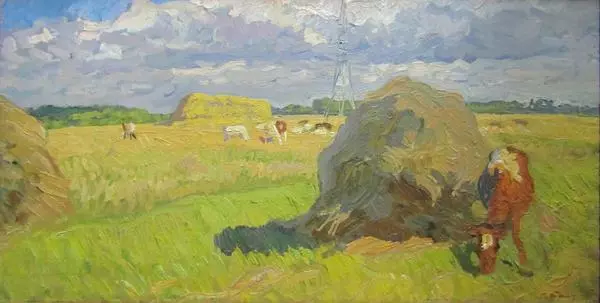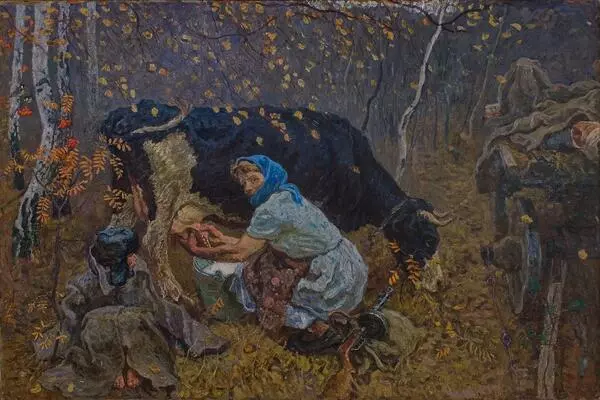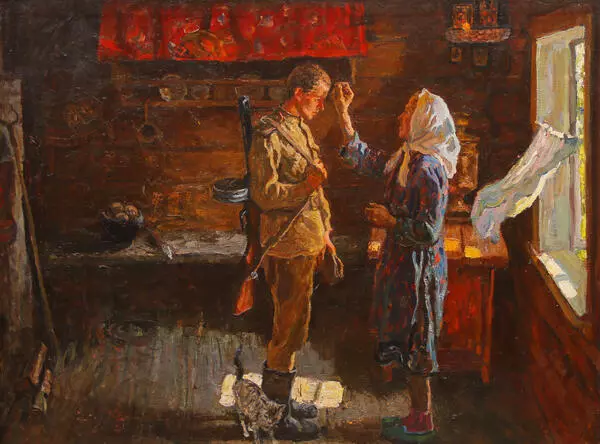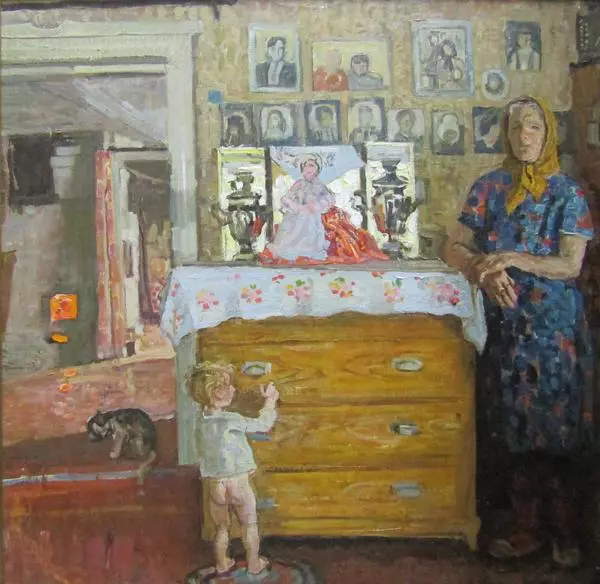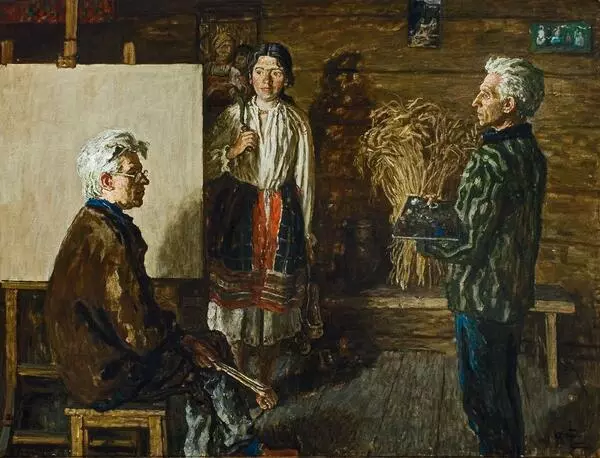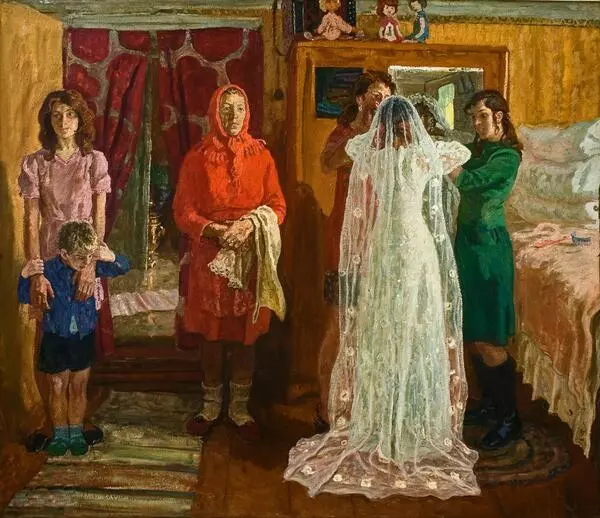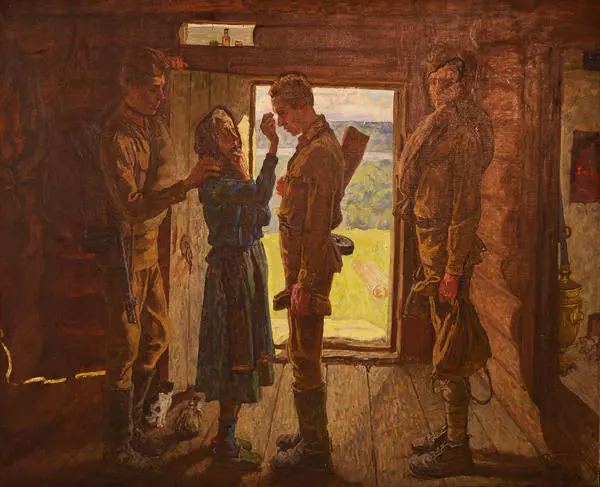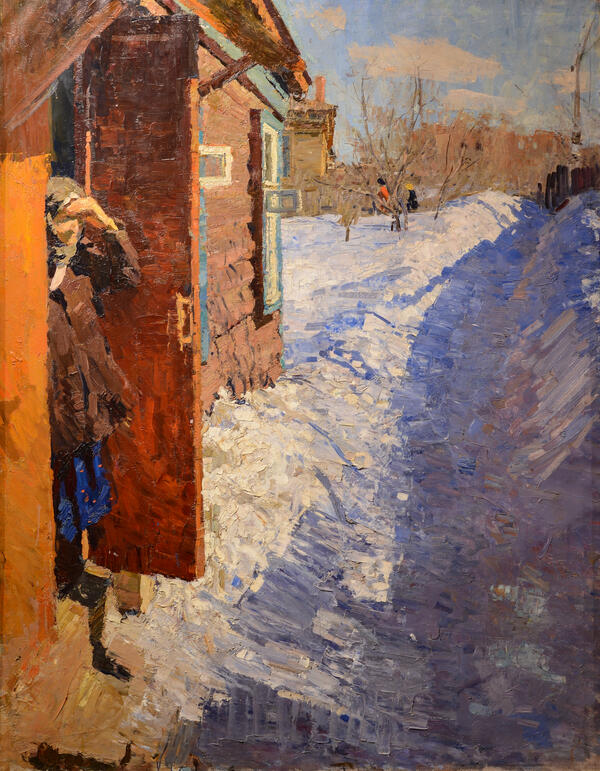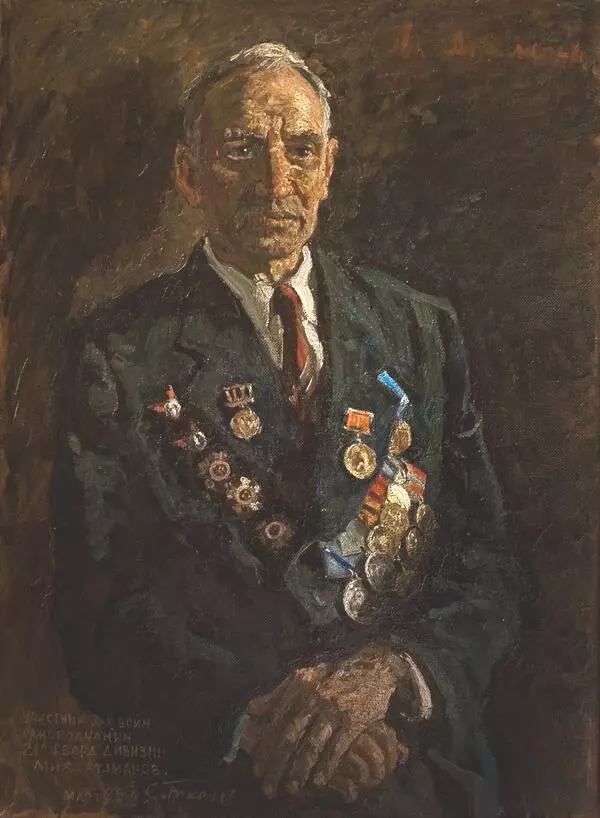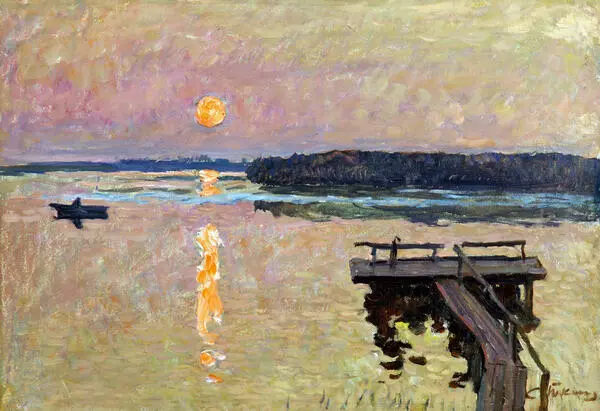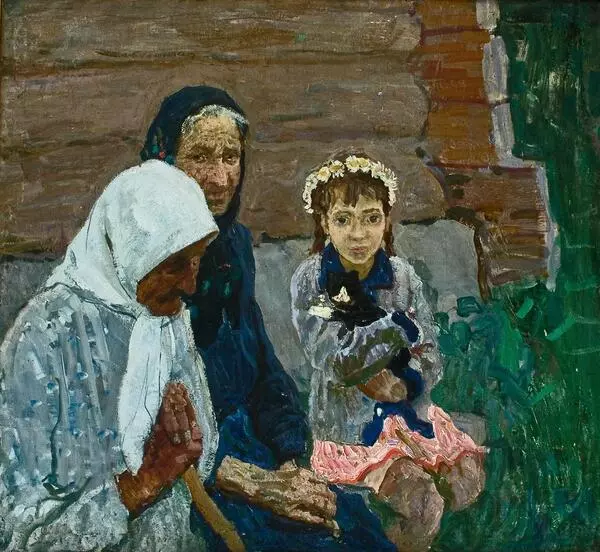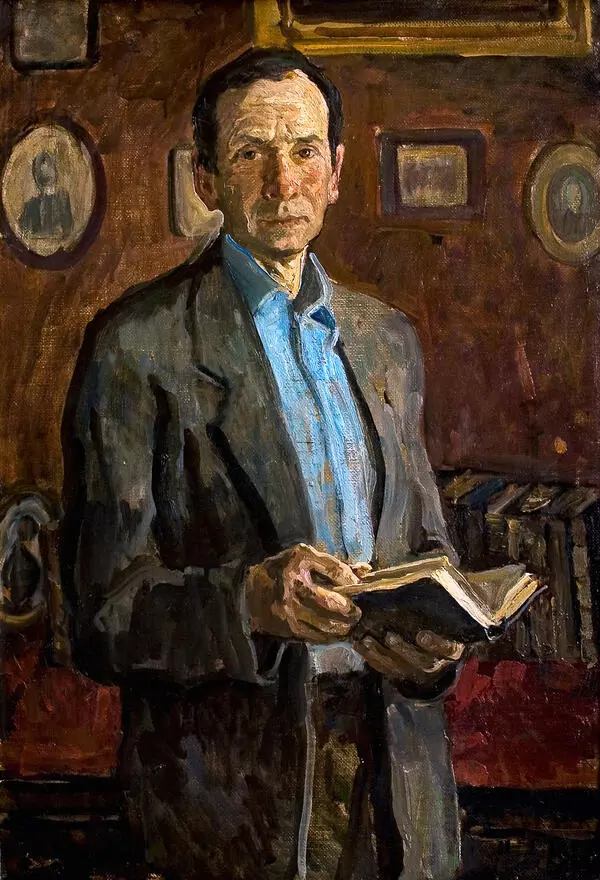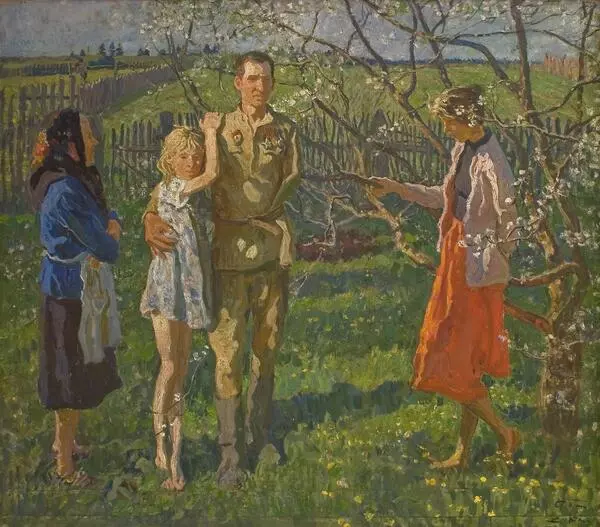Sergei Tkachyov worked on ‘The Teacher in 1959. In it, he depicts a young school teacher who has arrived in the countryside to teach reading and writing to peasants and Red Army soldiers. The subject’s head is leaning slightly, with her chin resting on her right hand. Her gaze is fixed in front of her thoughtfully. A dark coat with a scarlet bow on the lapel is draped over her slender shoulders. The red cloth helps the viewer to better understand the subject, as bows like these symbolized the wearer’s participation and faith in the revolutionary movement and its ideals.
This image was part of the preliminary work which eventually became the Tkachyov brothers’ ‘Between Fights’. They dedicated the work to the theme of illiteracy in the formation of the USSR. During the revolution, the Tkachyovs’ father took part in educational programs in the countryside. Later he would tell his sons how Red Army soldiers and elderly peasants sat at tables usually occupied by schoolchildren and wrote the first letters of their lives. Once they were professional artists, the brothers decided to create a piece on this theme, and searched for suitable subjects.
Sergei and Alexei Tkachyov were guided by an important principle: they would never use professional models. Their paintings would have real faces, not actors pretending to be heroes, but the heroes themselves, with all their particular traits. Occasionally the brothers depicted a collated image rather than a specific person. This is the case in “Between Fights”. The stories told to the brothers by a female teacher inspired them when working on this piece.
In the old village school in Podol, the artists met a retired teacher called Antonina Vasilieva. She recounted to the artists how as an eighteen year old school girl, after the October Revolution, she was sent to teach as part of the literacy program in Tver Oblast. The village’s residents were delighted to see here, albeit with some doubt: they weren’t convinced that a fragile young woman could achieve such a difficult task. Teenagers, Red Army soldiers returning from war and illiterate elderly peasants went to study with her. The young woman believed in her work and threw herself into it.
Her tales deeply affected the artists. They explained, “We decided to depict her, or rather, a frail young woman, in the painting. But she had changed rather a lot over 50 years! Only her big, intelligent eyes had stayed the same. And so began our search for a young woman who looked similar to her. We painted a few dozen subjects. Then, little by little, we transferred all the necessary features from the studies.”
The preliminary studies were painted by the brothers independently. Out of several dozen such works, four became the most famous. One of these studies was a painting of Elena Leonova, the daughter of Leonid Leonov. Another one was of art historian Ella Gankina. Two of them, including this one, were of the same subject: Larisa Kugach.
This image was part of the preliminary work which eventually became the Tkachyov brothers’ ‘Between Fights’. They dedicated the work to the theme of illiteracy in the formation of the USSR. During the revolution, the Tkachyovs’ father took part in educational programs in the countryside. Later he would tell his sons how Red Army soldiers and elderly peasants sat at tables usually occupied by schoolchildren and wrote the first letters of their lives. Once they were professional artists, the brothers decided to create a piece on this theme, and searched for suitable subjects.
Sergei and Alexei Tkachyov were guided by an important principle: they would never use professional models. Their paintings would have real faces, not actors pretending to be heroes, but the heroes themselves, with all their particular traits. Occasionally the brothers depicted a collated image rather than a specific person. This is the case in “Between Fights”. The stories told to the brothers by a female teacher inspired them when working on this piece.
In the old village school in Podol, the artists met a retired teacher called Antonina Vasilieva. She recounted to the artists how as an eighteen year old school girl, after the October Revolution, she was sent to teach as part of the literacy program in Tver Oblast. The village’s residents were delighted to see here, albeit with some doubt: they weren’t convinced that a fragile young woman could achieve such a difficult task. Teenagers, Red Army soldiers returning from war and illiterate elderly peasants went to study with her. The young woman believed in her work and threw herself into it.
Her tales deeply affected the artists. They explained, “We decided to depict her, or rather, a frail young woman, in the painting. But she had changed rather a lot over 50 years! Only her big, intelligent eyes had stayed the same. And so began our search for a young woman who looked similar to her. We painted a few dozen subjects. Then, little by little, we transferred all the necessary features from the studies.”
The preliminary studies were painted by the brothers independently. Out of several dozen such works, four became the most famous. One of these studies was a painting of Elena Leonova, the daughter of Leonid Leonov. Another one was of art historian Ella Gankina. Two of them, including this one, were of the same subject: Larisa Kugach.





